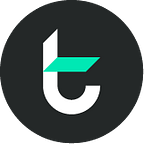TOMO Cheat Sheet #5 — Experiencing TomoChain's Testnet Collection (Pt.1)
“Practice makes perfect” — that’s the phrase always mentioned when it comes to reaching one’s best version. Perfection requires time, energy, and lots of practice. Understanding this ever-lasting rule, TomoChain provides users with a testnet version for each of our products, before releasing the final mainnet version.
Thus, what’s the difference between a testnet and mainnet version, and how can testnets help with the development of TomoChain’s ecosystem? Let’s all find out in this article.
What’s a testnet?
Testnet is a term for a blockchain network that is used primarily for testing purposes. Being basically identical to the main network, a testnet allows users to experiment with new features or ideas without causing any disruption to the main blockchain. Therefore, coins attached to the testnet version have no real value.
There are two types of testnets: a private testnet and a public testnet. While a private testnet can only be accessed with permission from the developer, a public testnet can be experienced permissionless. TomoChain’s testnets are all public ones, allowing all kinds of users to get access to them.
What’s a testnet’s purpose?
Testnet is designed as a sandbox environment to imitate how the application will work in the mainnet version. Since there’s no value to the testnet coins, application developers and testers can examine with the advantage of not having to worry about paying any cost or causing any effects to the real blockchain.
What’s the difference between a testnet and mainnet?
Upon first glance, many may assume that mainnets and testnets essentially mean the same thing or are exactly the same thing. However, network credibility is what sets them apart.
If a testnet is solely a free experimenting playground, a mainnet is the original and currently functioning blockchain in which legitimately transactions occur, verifying a creditable blockchain network with real economic value.
Digging deeper into the technical aspect, the two key differences between testnets and mainnets are the network ID and the genesis block. A network ID is a network’s identity, similar to an individual ID card or passport, and a genesis block is the very first block in the chain that represents the starting point. Since both the mainnet and the tesnet operate as different networks, they have different genesis blocks, though the content of the block may be the same.
TomoChain’s testnet collection
TomoChain releases a testnet version for each of our products in order to test its different functions and collect feedback from the community. TomoChain’s current testnet allows you to experience blockchain with but not limited to the following functions:
- Vote for and test-run a Masternode.
- Test-staking and earning testnet rewards.
- Open up your own DEX (decentralized exchange).
- Test-trade on TomoDEX
- Create anonymous sending and receiving transactions.
- Issue a TRC21 token on TomoChain.
This guide will walk you through a general view of TomoChain’s testnets, and how you can maximize your experience with each one.
NOTE:
- TOMO on testnet has NO real value and can only be used on testnet versions.
- Any sending/receiving and trading transactions on testnet do not affect mainnet’s network.
- To get TOMO testnet, please visit Faucet.
Staking double-life with TomoMaster
Detailed guides on how to experience TomoMaster
- TomoMaster Proposal
- TomoMaster FAQ
- TomoMaster testnet Web version.
Being identical, users can experience testnet in the exact same order as executed on mainnet with staking, unstaking, and withdrawing TOMO, as well as tracking TOMO staking rewards.
- Notes:
In both testnet and mainnet version, a deposit of 50k TOMO is required to become a masternode candidate. Please contact TomoChain’s admin via TomoChain’s telegram to get your 50k testnet TOMO and become one of the top 150 masternodes.
Some users prefer to stay away from being famous on the leaderboard, hence, they join as voters. The option to stake as voters help users remain low-key but still be able to generate profit.
The reward pool for every Masternode is equal. Each Masternode divides the rewards by the total amount of TOMO staked on it and then distributes them to all voters proportional to the amount staked. Hence, Masternodes with more TOMO staked provide lower rewards since the total reward pool is divided into more parts. One response may be to vote for the Masternodes on the bottom of the top 150 to maximize rewards. However, it’s not that simple. A Masternode at the bottom of the top 150 risks falling below rank 150 if it loses votes or a Masternode Candidate receives enough votes to reach the top 150. When a Masternode is dragged out of the top 150, it no longer receives rewards so staking rewards will also drop to 0. There is always a risk to reward ratio to consider.
Due to the trickiness of the reward system, it is important to step into the game with an experienced mindset. Thus, TomoMaster testnet version is the perfect place for you to practice your staking skills before getting into the real battlefield.
More TomoChain's testnet protocols will be summarized in the next part of TOMO Cheat Sheet #5.
